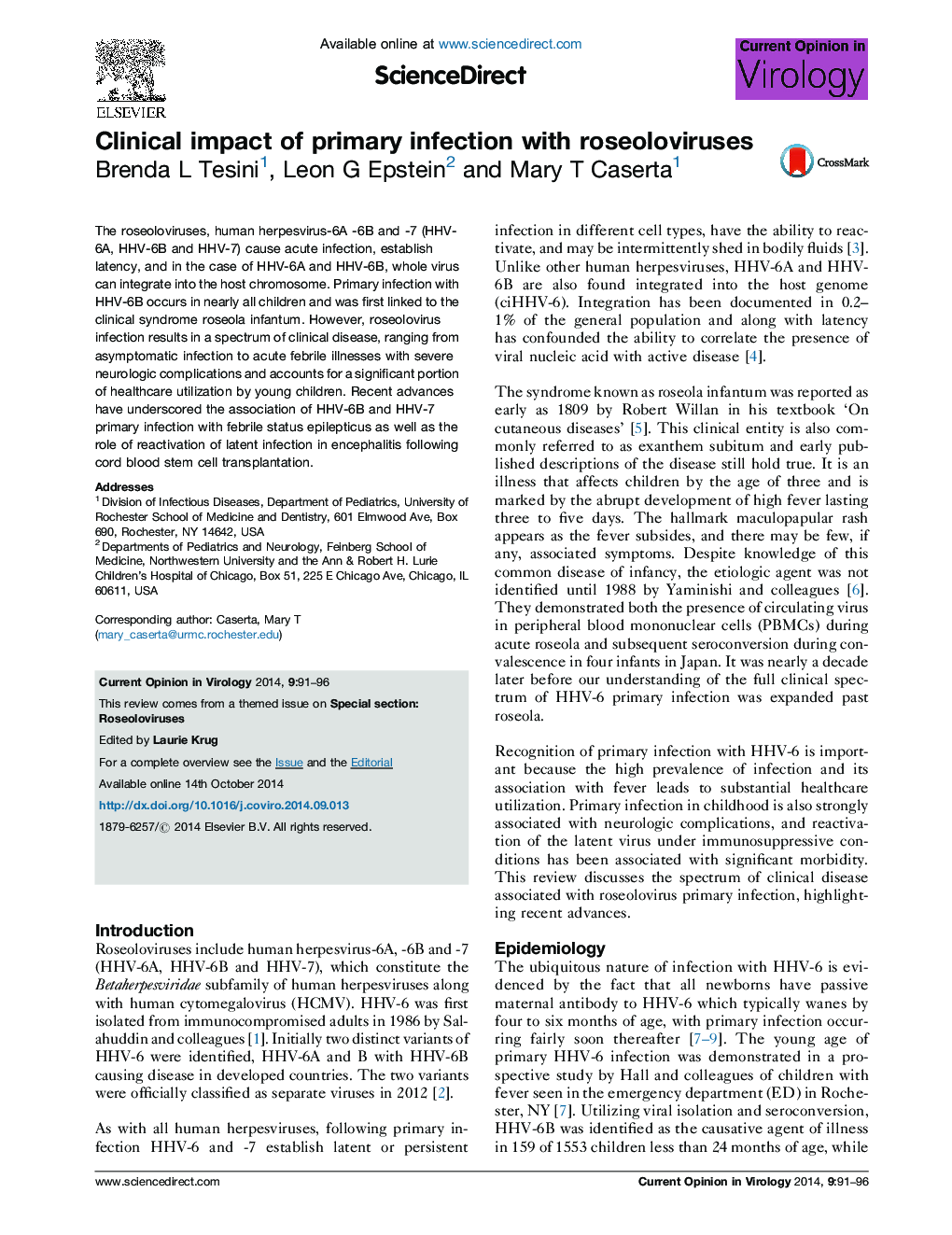| کد مقاله | کد نشریه | سال انتشار | مقاله انگلیسی | نسخه تمام متن |
|---|---|---|---|---|
| 2473335 | 1555917 | 2014 | 6 صفحه PDF | دانلود رایگان |
• HHV-6B primary infection occurs in nearly all children by three years of age.
• HHV-6 can integrate into the host genome and be passed via germline transmission.
• Only a quarter of HHV-6B primary infections manifest as roseola infantum in the US.
• HHV-6B or HHV-7 account for 1/3 of febrile status epilepticus cases in children.
• Delayed HHV-7 primary infection may be associated with more severe neurologic complications.
The roseoloviruses, human herpesvirus-6A -6B and -7 (HHV-6A, HHV-6B and HHV-7) cause acute infection, establish latency, and in the case of HHV-6A and HHV-6B, whole virus can integrate into the host chromosome. Primary infection with HHV-6B occurs in nearly all children and was first linked to the clinical syndrome roseola infantum. However, roseolovirus infection results in a spectrum of clinical disease, ranging from asymptomatic infection to acute febrile illnesses with severe neurologic complications and accounts for a significant portion of healthcare utilization by young children. Recent advances have underscored the association of HHV-6B and HHV-7 primary infection with febrile status epilepticus as well as the role of reactivation of latent infection in encephalitis following cord blood stem cell transplantation.
Journal: Current Opinion in Virology - Volume 9, December 2014, Pages 91–96
